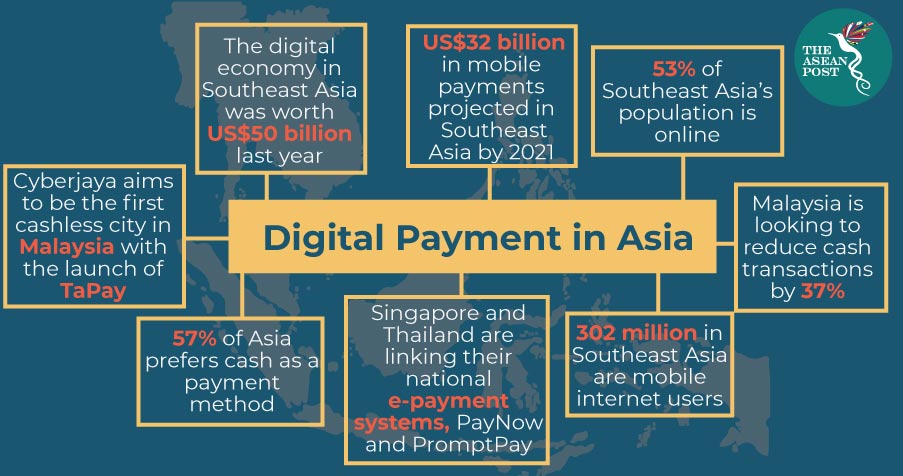Online Payment Trends in Southeast Asia are rapidly transforming the way consumers and businesses interact in the digital economy. As technology continues to evolve, so do the preferences and behaviors of users in this vibrant region. From mobile wallets to cryptocurrencies, the rise of online payment methods is reshaping traditional financial landscapes and opening up new avenues for commerce.
This exploration delves into the factors driving these trends, the impact of regional economic growth, and the adoption of innovative payment solutions that cater to the diverse needs of Southeast Asian consumers. With an increasing number of people gaining access to the internet and smartphones, understanding these trends is essential for businesses looking to thrive in this dynamic market.
In the ever-evolving landscape of technology and communication, the way we interact with one another has undergone significant transformations. From the early days of face-to-face conversations and handwritten letters to the modern age of instant messaging and video calls, the methods we use to connect have expanded dramatically. This article delves into the various aspects of communication in the digital age, exploring how these changes impact our relationships, work environments, and overall societal dynamics.One of the most notable changes in communication over the past few decades is the rise of digital platforms.
Social media, for instance, has revolutionized the way we share information and interact with others. Platforms like Facebook, Twitter, Instagram, and LinkedIn allow individuals to connect with friends, family, and colleagues across the globe, breaking down geographical barriers. The ability to share updates, photos, and thoughts in real-time has made communication more immediate and accessible than ever before.However, while these platforms have their advantages, they also come with a set of challenges.
The nature of online communication can lead to misunderstandings and a lack of depth in conversations. Non-verbal cues, such as body language and tone of voice, are often lost in text-based exchanges. This can result in misinterpretations of intent, leading to conflicts and strained relationships. Additionally, the prevalence of online interactions can sometimes create a sense of isolation, as individuals may prioritize virtual connections over face-to-face interactions.Moreover, the impact of digital communication extends to professional environments as well.
The rise of remote work, accelerated by the COVID-19 pandemic, has transformed how teams collaborate and communicate. Tools like Zoom, Slack, and Microsoft Teams have become staples for conducting meetings, sharing information, and fostering team dynamics. While these tools have made remote work feasible, they also necessitate a shift in communication styles. Clear and concise messaging becomes paramount, as nuances can easily be lost in translation when team members are communicating from different locations.The need for effective communication in the workplace cannot be overstated.
Miscommunication can lead to errors, decreased productivity, and a decline in employee morale. To mitigate these issues, organizations are increasingly prioritizing communication training and team-building exercises. These initiatives aim to enhance understanding among team members, encouraging open dialogues and fostering a culture of feedback. By investing in communication skills, companies can cultivate a collaborative environment that drives innovation and success.In addition to the workplace, communication also plays a critical role in our personal relationships.
The dynamics of friendships and romantic partnerships have shifted as a result of digital communication. On one hand, technology enables us to maintain connections with loved ones, regardless of distance. Video calls can bridge the gap between friends and family, allowing us to share experiences in real-time. On the other hand, the reliance on digital communication can sometimes lead to superficial interactions.
This raises questions about the quality of our relationships—are we truly connecting with one another, or are we simply maintaining a facade of connection through likes and comments?Furthermore, the influence of communication extends beyond personal relationships and workplaces; it shapes societal interactions as well. The advent of online activism and social movements has demonstrated the power of digital communication in effecting change.
Platforms like Twitter and Instagram have become catalysts for mobilizing communities around important causes, allowing individuals to share their voices and experiences. However, this democratization of communication also raises concerns about the spread of misinformation and the challenges of navigating online discourse. It becomes crucial for individuals to critically evaluate the information they encounter, fostering a culture of responsible communication.As we navigate the complexities of communication in the digital age, it’s essential to recognize the value of adaptability.
The ability to adjust our communication styles to suit different contexts and audiences is a vital skill. Whether it’s transitioning from a casual chat with friends to a formal presentation at work, being attuned to the needs of our interlocutors can enhance our interactions. Additionally, actively listening and providing feedback can foster deeper connections, both personally and professionally.Looking ahead, the future of communication is likely to be shaped by advancements in technology.
The rise of artificial intelligence and machine learning is already beginning to influence how we interact with one another. For instance, virtual assistants and chatbots are becoming more prevalent, providing assistance and facilitating conversations. However, as technology continues to evolve, it becomes increasingly important to maintain a human touch in our communications. Balancing the advantages of digital tools with the need for genuine connections will be key to fostering meaningful interactions in the years to come.In conclusion, communication in the digital age is a multifaceted phenomenon that impacts every aspect of our lives.
From personal relationships to professional environments, the way we connect with one another continues to evolve. While technology has opened new avenues for interaction, it also presents challenges that require us to be mindful of how we communicate. By prioritizing effective communication skills and embracing adaptability, we can navigate the complexities of our interconnected world. As we move forward, let us strive to foster authentic connections, both online and offline, ensuring that our communication remains a powerful tool for building relationships and driving positive change.


